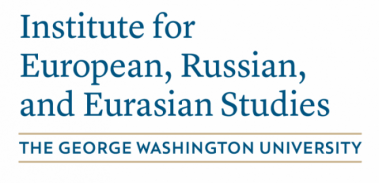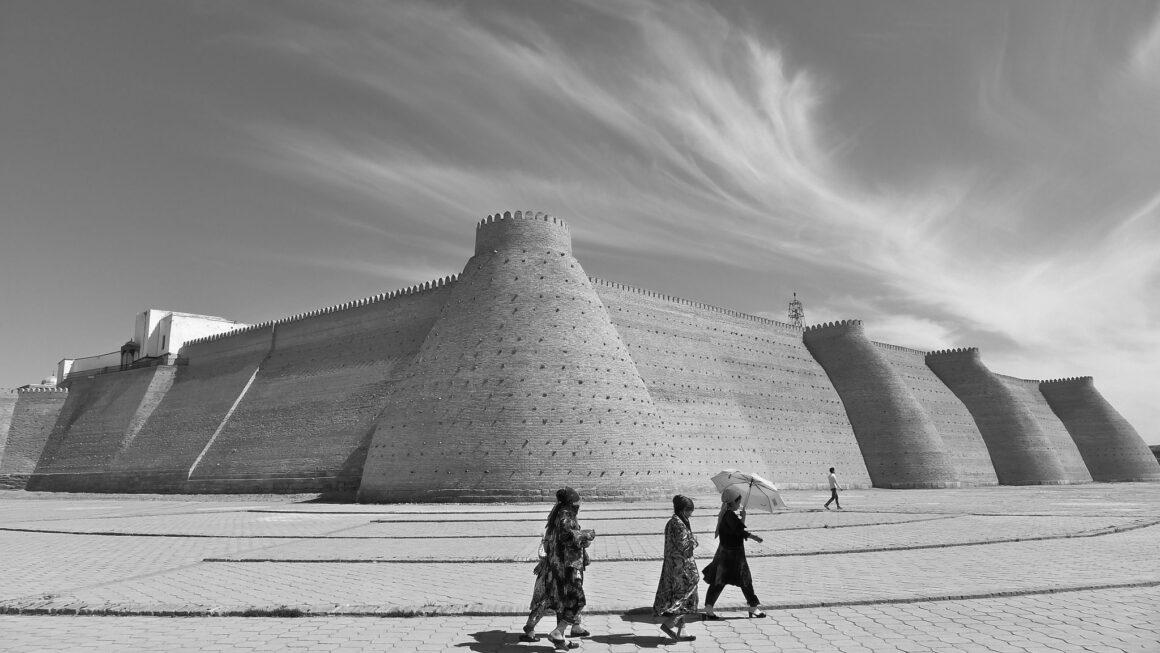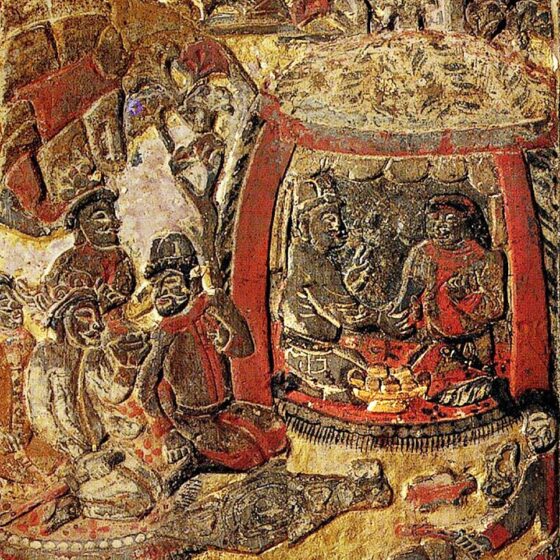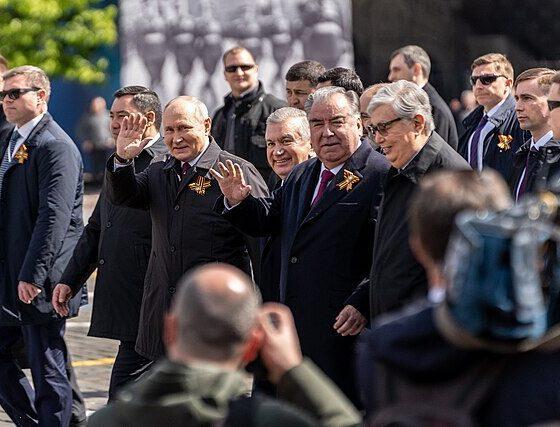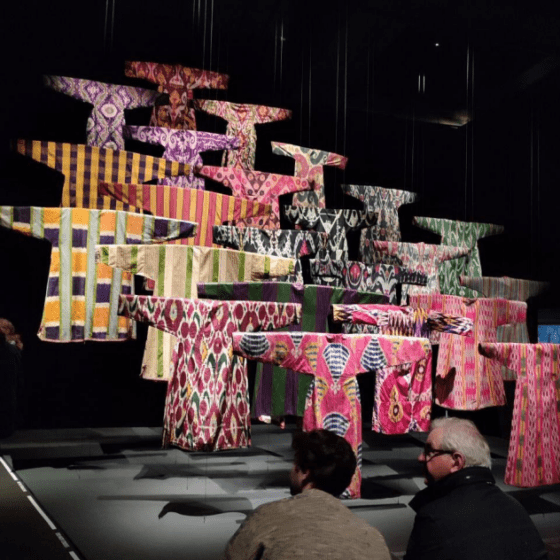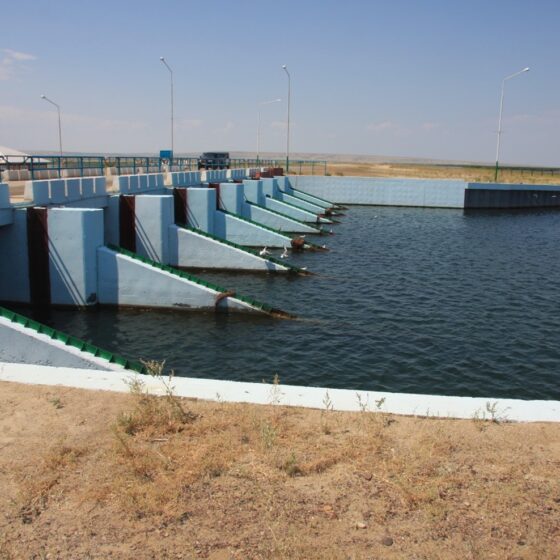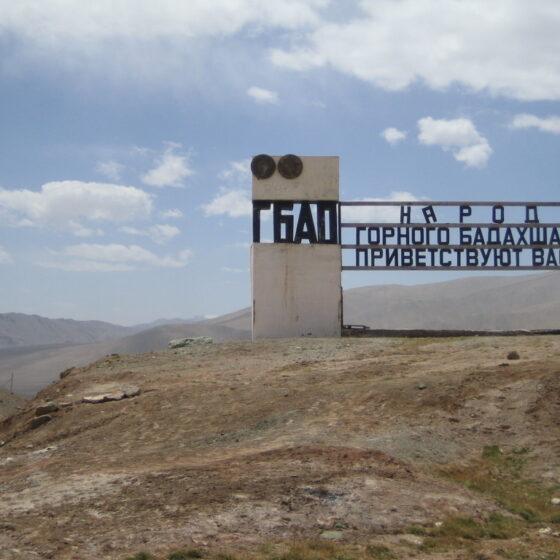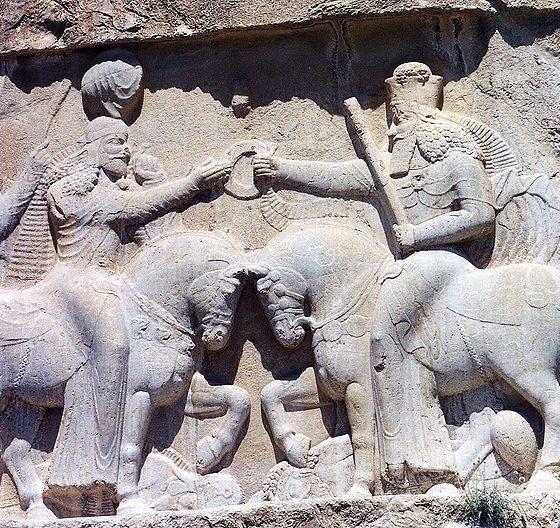Эксперты новой платформы «Алматы-клуб», организованной при поддержке Фонда Фридриха Эберта в Центральной Азии и посвященной специализированной дискуссии о Центральной Азии, говорят в интервью CAAN о перспективах региональной интеграции, изменениях во внешней политике и социально-экономических вызовах региона.
В интервью участвуют Санат Кушкумбаев (Казахстан, Астана) – политолог, доктор политических наук, заместитель директора Казахстанского института стратегических исследований (КИСИ), Эльмира Ногойбаева (Кыргызстан, Бишкек) – руководитель Аналитического центра «Полис Азия» (Кыргызстан»). Галия Ибрагимова (Узбекистан, Ташкент) – политолог и консультант ПИР-Центра политических исследований в Москве.
Как, по Вашему мнению, региональное сотрудничество в ЦА рассматривается в самих странах и нынешними элитами? Есть ли признаки того, что эта идея будет поддержана сверху, или она в основном полагается на запрос из общества?
Санат Кушкумбаев
Этот вопрос поднимался с момента получения независимости и даже еще в последние годы существования СССР. В 1990 г. в Ашхабаде была встреча руководителей тогда еще союзных республик Средней Азии и Казахстана. На саммите в Ташкенте в январе 1993 г. было принято единое определение – Центральная Азия, объединяющее все пять стран. В дальнейшем были и межгосударственные организации по региональному сотрудничеству – ЦАЭС, ОЦАС, но они уже не существуют. Элиты оказались не готовы перейти от локальных и/или узко национальных интересов к региональным масштабам; ощутимыми стали и различия в национальных политико-экономических моделях.
При этом официально региональное сотрудничество не отвергается, но идея региональной кооперации сдвинута на задворки. Казахстан, например, официально декларирует приоритет регионального сотрудничества. Его южные соседи расставляют другие акценты. Приоритет двустороннего сотрудничества, нейтралитет и другие декларируемые задачи выглядят больше как повод, а не причина. В текущей экономической и геополитической ситуации существует немного признаков того, что эта идея оживится на уровне национальных элит. Но общественный запрос, хотя и не сильно выраженный, есть, и он может возрасти; активизировались экспертные дискуссии. Общества стран региона все больше понимают, что безвизовый режим, транспарентные границы, правовая защищенность и т.д. дают больше возможностей, нежели национальная замкнутость. В обозримой перспективе полагаю, что мы можем быть свидетелями возросшего общественного запроса и, соответственно, сдвигов в позициях элит.
Эльмира Ногойбаева
Полагаю, что ситуация не однообразна, а скорее в меняющейся динамике. Был период, когда страны и лидеры переживали период эйфории от независимости и собственной значимости. Но 2014-2015 год кардинально изменил ситуацию. Вызовы усиливаются: Украина, Крым, ЕАЭС, экономический кризис, политическая геронтология с предстоящей сменой власти для лидеров двух ведущих держав ЦА. Все это приводит к тому, что отношение к соседям пересматривается. Теперь необходимость в политической региональной коммуникации актуализируется.
Практически все лидеры государств находятся в состоянии компромисса с большим игроком, союз с которым, скорее, удерживает от сближения, чем наоборот. Все лидеры в разной степени вынуждены маневрировать, северный ветер предполагает одинаковый маневр-рисунок элит ЦА, разумеется, с различной степенью лояльности. На пороге новый вызов – Сирия, и уже открытое вхождение России в этот конфликт. Россия – доминанта ОДКБ, союза, в который входит большинство стран региона. Региона, не самого ближнего соседа Сирии, но все же – такого же восточного, исламского мира. И это вызов, который еще только разворачивается. Без усиления политической коммуникации каждая страна рискует. И это как никогда понимают лидеры региона. Необходимость компромисса взаимоотношений все очевидней.
Запрос общества, так или иначе, присутствует. Та же торговля, бизнес … Но судя по всему, последствия открытия таможенных границ и вхождение в ЕАЭС, наоборот, усугубляют проблему. Это видно, прежде всего, по Казахстану и Кыргызстану. Казахстан вообще стал заложником «игры в ножницы». Это сказывается на ценах, на бизнес проектах, на поставках товаров и наоборот.
Галия Ибрагимова
Идея центральноазиатского сотрудничества всерьез рассматривалась в период, когда страны региона только обрели суверенитет и стали субъектами международных отношений. Тогда, в 1990-е гг., когда опыт государство- и нациестроительства только обретался государствами региона, при этом оставались нерешенными многие внутрирегиональные проблемы, оставшиеся как от советского наследия, так и новые, возникшие с его распадом, и важно было искать их решение, взаимодействуя. Иными словами, центральноазиатским странам пришлось учиться самостоятельно строить регион. Эта учение не прошло зря. Во многом, благодаря тесной региональной кооперации, пусть и с вовлечением внерегиональных сил, удалось, например, прекратить гражданскую войну в Таджикистане, решить вопрос делимитации и демаркации границ между Китаем с одной стороны, и государствами Центральной Азии и России – с другой.
Далее были попытки на региональной основе приступить к решению водно-энергетических проблем, согласованно решать вопросы пограничного и таможенного контроля, начать формировать единое центральноазиатское экономическое пространство. Результатом этих совместных усилий стало создание в 2002 г. организации Центрально-Азиатское сотрудничество (ОЦАС). В 2004 г. Россия были принята в члены организации, а вскоре произошло слияние ОЦАС с ЕврАзЭС, и первая прекратила свое существование.
Имеет место точка зрения, что именно вступление России в ОЦАС помешало центральноазиатской интеграции и в итоге привело к распаду организации, похоронив саму идею интеграции. Не исключаю, что доля истины в этом есть. Но винить только Москву в несостоявшейся интеграции региона – значит, не видеть всю сложность и противоречивость общения государств Центральной Азии по целому ряду региональных проблем, накопившихся между ними к этому моменту. Скорее, республики региона рассматривали вступление России в ОЦАС как некий способ найти через нее компромисс друг с другом. Особенные надежды возлагали на помощь Кремля в решении проблем воды, энергоснабжения, границ и пограничного контроля в регионе. Но быстро осознав, что говорить друг с другом становится все сложнее, и даже Москва не в состоянии примирить позиции стран, центральноазиатские государства выбрали наиболее дипломатичный способ прекратить существование ОЦАС, интегрировав ее в более крупную структуру. Из-за проявленной неспособности, нежелания, неготовности центральноазиатских элит к компромиссным практическим решениям, ОЦАС к 2005 г. уже была обречена и все равно распалась бы, участвуй в ней Россия или нет.
В обществах Центральной Азии запрос на интеграцию сегодня, скорее, существует, чем нет. Народы Центральной Азии исторически были тесно связаны друг с другом, и эта общность – культурная, ментальная, этническая, социальная – сохраняется и сегодня. Ко всему есть объективные причины, по которым для центральноазиатских обществ целесообразнее быть единым регионом. Жители желали бы беспрепятственно пересекать границы друг друга (чего стоит визовый режим между соседними Узбекистаном и Таджикистаном), иметь упрощенные механизмы для трудоустройства в государствах региона, получать образование в соседних странах и др.
Но нынешняя тенденция такова, что страны Центральной Азии охотнее интегрируются в многосторонние форматы сотрудничества с внерегиональными участниками, предпочитая избегать сугубо общерегионального диалога. Элиты государств региона, выстроив жесткую вертикаль власти, свыклись с мыслью о самодостаточности и независимости каждой из стран. И если ранее велись хотя бы дискуссии о целесообразности регионального сотрудничества для решения общих проблем, то теперь речь заходит лишь о двустороннем формате сотрудничества центральноазиатских стран друг с другом. Это ведет к тому, что страны региона отдаляются друг от друга, все больше возникает различий между социально-экономическими, политическими моделями их развития. Научного и экспертного дискурса о плюсах и минусах центральноазиатской интеграции становится все меньше, что снижает интерес к теме.
Лидеров стран региона можно увидеть вместе за столом переговоров лишь на саммитах ШОС, СНГ, ООН и др. Казахстан и Кыргызстан стали участниками Евразийского экономического союза (ЕАЭС), что еще больше сблизило их с Россией. Таджикистан в условиях роста угроз национальной безопасности, связанных с ИГИЛ и нестабильностью в соседнем Афганистане, а также из-за социально-экономических сложностей тоже симпатизирует России, что сближает его с казахстанской и кыргызстанской интеграционными парадигмами. Не исключено, что Душанбе в среднесрочной перспективе примет решение вступить в ЕАЭС. Узбекистан по-прежнему не приемлет никаких интеграционных форматов, предпочитая ориентироваться на собственные силы и декларируя свой внеблоковый статус. Тем не менее, Россия и Казахстан остаются основными торговыми партнерами Ташкента, и общаться с ними, теперь в новом качестве – участников ЕАЭС, все равно придется. Туркменистан верен своей политике нейтралитета, но в условиях усиливающихся угроз исламизма и терроризма, очевидно, что оставаться нейтральным будет все сложнее.
Все страны региона активно поддерживают инфраструктурные проекты, инициируемые китайской стороной. Идеи Пекина о создания Азиатского банка инфраструктурных инвестиций, Экономического пояса шелкового пути (ЭПШП) были поддержаны практически всеми центральноазиатскими государствами. Это означает, что в ходе реализации проектов странам региона придется взаимодействовать не только с КНР, но и друг с другом.
Оставив за «скобками» анализа вопрос о том, хорошо ли это для Центральной Азии -интегрироваться в пророссийские или прокитайские интеграционные проекты. В то же время, приняв за аксиому тезис о том, что интеграция и многостороннее сотрудничество – это объективный современный процесс для любой развитой или развивающейся страны (и центральноазиатские государства здесь не исключение), важно понять, смогут ли (а если да, то каким образом) такие проекты и структуры, как ЕАЭС, ШОС, ЭПШП, стать основой или способствовать возобновлению центральноазиатского сотрудничества, а в перспективе, не исключено, региональной интеграции. Несмотря на кажущуюся утопичность такой идеи, важно пытаться анализировать и искать все способы, механизмы и инструменты для возобновления строительства единого региона Центральной Азии собственными силами.
Например, когда был предложен проект «Один пояс – один путь», у многих стран и самого Пекина были сомнения: как отнесется к нему Россия, ЕС, США. Тем не менее, прошло чуть более года, как ЭПШП и ЕАЭС стали не только не конкурирующими проектами, но было принято решение о совмещении этих двух проектов. При этом Запад вполне адекватно воспринял такое решение. Во многом, такому решению способствовал звучащий российский и китайский научный и экспертный дискурс, повлиявший на решение элит двух стран состыковать два проекта. Почему бы центральноазиатским ученым и СМИ вместо того, чтобы муссировать мифы о соперничестве стран Центральной Азии, не переключиться на обсуждение: а нужна и выгодна ли сегодня интеграция региона, как найти основу для возобновления регионального сотрудничества, как в этом могут помочь такие структуры как ЕАЭС, ЭПШП, ШОС. Экспертный дискурс очень важен, чтобы интерес к теме центральноазиатской интеграции не угасал и оказывал влияние на лиц, принимающих решения.
В связи с текущими событиями на Украине и экономическими трудностями, как Вы оцениваете вероятность изменения внешнеполитических векторов в странах ЦА? Бишкек, похоже, взял более определенный курс на Россию, тогда как Астана, напротив, переоценивает свой евразийский фокус в пользу большего сотрудничества с Китаем? Не могли бы Вы вкратце проанализировать внешнеполитические тенденции во всех странах ЦА, включая Туркменистан, который, довольно активизировался в региональном поле?
Санат Кушкумбаев
Кардинальных изменений внешнеполитических векторов в странах ЦА ожидать не стоит. Выработанная стратегия на получение дивидендов от сотрудничества и балансирования в отношениях с внешними игроками в целом остается. Есть, безусловно, новые нюансы, как, например, в позиции того же Бишкека в отношениях с США. В сухом остатке за дипломатическими демаршами следует обратить внимание на реальные возможности Кыргызстана. Очевидно, что игнорировать интересы США (шире – Запада) там просто не смогут и, в действительности, не намерены. Курс на Россию понятен и не нов, социально-экономическая и геополитическая ситуация делает его более рельефным. Но при этом роль Китая, как в регионе, так и в Кыргызстане также возрастает. Это реальность, которая не оформляется в торжественные церемонии вступления в какие-либо международные организации. Из внешних игроков «второй линии» Бишкек имеет политическую и экономическую поддержку Турции. И как видно, из последних событий пытается привлечь Иран как другого влиятельного игрока.
Не стоит также рассматривать активность Астаны в отношениях с КНР как переоценку евразийской стратегии. Напомню, баланс интересов остается ключевым ориентиром. Казахстан не отказывался от многовекторной дипломатии как инструмента продвижения своих интересов. Да, пространство для маневров где-то сузилось, но одно направление не исключает другого. По крайней мере, так в Казахстане видят ситуацию.
Другие государства Центральной Азии – Узбекистан, Туркменистан и Таджикистан – называют ли свои стратегии мультивекторными или нет, де-факто также стремятся иметь несколько точек опоры. Для Таджикистана (как и для Кыргызстана) Китай уже давно стал внешним инвестором номер один, а Иран и Индия рассматриваются в Душанбе как растущие игроки. В целом для региона Пекин – уже ключевой финансово-экономический партнер. Вот этот вектор объективно будет усиливаться. Но страны региона не хотят ограничиваться и готовы к расширению присутствия других глобальных игроков, отсюда роль ЕС и США. Тот же Узбекистан демонстрирует открытость для политико-экономических инициатив западных держав. Из игроков меньшего масштаба Ташкент имеет сильные связи с Южной Кореей, Ашхабад с Турцией и Ираном.
Эльмира Ногойбаева
Из всех стран ЦА наиболее лояльным к России сейчас является Кыргызстан. Казахстан постепенно начинает оценивать «цену компромисса» экономически, подсчитывая потери. При этом данный процесс только разворачивается. При двойственной ситуации с санкциями в РФ, санитарными нормами, вернее, их отсутствием, непрозрачными и коррупционными схемами во всех стран нового [Евразийского] союза, развивать экономику становиться все сложнее. В этот момент мы наблюдаем осторожное, молчаливое, но напористое вхождение Китая в регион, в самые что ни на есть стратегические сферы: инфраструктуру, освоение углеводородов, с все более явным перевесом и предложением ресурсов и технологий. Политически поддерживая российскую политику, Китай демонстрирует прагматизм и, скорее, индивидуализм в экономике, ему нужны новые рынки, и здесь он себе не отказывает ни в чем. Активно входит в регион относительно молодой игрок, но очень заинтересованный в освоении рынка – Южная Корея, а также Япония. На мой взгляд, при всем кажущемся политическом однообразии, на самом деле происходит экономическая диверсификация. Даже Туркменистан отмечает 20-летие своего нейтралитета гораздо шире и дальше, чем пределы своей границы, отмечая его в первую очередь в уже названных странах, с участием первого лица государства.
Изменения происходят. На мой взгляд, пока два непримиримых оппонента выясняют отношения, Центральная Азия начинает потихоньку разворачиваться на восток. И это логично.
Галия Ибрагимова
События на Украине способствовали укреплению режимов в Центральной Азии. Под воздействием информации о событиях на юго-востоке Украины, которая потоками, через российские и западные СМИ и интернет, льется на жителей региона, здесь актуализировался постулат «лишь бы не было войны». Общественность стала терпимее относиться к возникшим социально-экономическим трудностям в странах региона, которые в свою очередь стали отголосками экономических трудностей в России. Жители Узбекистана или Казахстана руководствуются принципом, что в отличие от Украины, в их странах – стабильно и относительно безопасно, и главная заслуга в этом – действующих в странах политических режимов. Президентские выборы, прошедшие весной в Узбекистане и Казахстане, где граждане двух стран отдали большинство голосов Каримову и Назарбаеву соответственно, доказывают, что авторитет действующих лидеров, несмотря на длительное пребывание у власти, не только не снизился, но и возрос. Во многом кризис на Украине способствовал этому.
Не думаю, что под воздействием событий на Украине произойдет существенная переоценка странами региона своих отношений с Россией. Не приведут они и к существенной смене внешнеполитических векторов государств Центральной Азии. Что касается метаний некоторых стран региона от одного центра силы к другому – то, на мой взгляд, это было присуще нам всем всегда. Регион Центральной Азии расположен внутри Евразии и окружен такими крупными государствами, как Россия, Китай, Индия, Иран. Внерегиональные акторы исторически, в той или иной мере, конкурировали за укрепление здесь своих позиций. Внутри, ставших почти четверть века назад независимыми, государств региона всегда было понимание, что усиление позиций одной внерегиональной державы в ущерб другой чревато тем, что сами страны в итоге рискуют быть поглощенными наиболее сильной державой. Отсюда появилась та самая многовекторность внешнеполитических курсов практически всех центральноазиатских стран. То есть, мы дружим и с Россией, и с ЕС, и с Китаем, и США, но в основе всего – наша собственная политическая субъектность в системе международных отношений. Такой подход свойственен и Ташкенту, и Астане, и Бишкеку, и Душанбе, и даже Ашхабаду. Все страны региона пытаются балансировать между внешними акторами в регионе, и нынешняя ситуация, когда Казахстан с одной стороны интегрируется с Россией в ЕАЭС, в то же время усиливает сотрудничество с Китаем, Индией, не является чем-то чрезвычайно новым. Это та самая многовекторность сотрудничества стран региона.
Не следует, конечно, игнорировать тот факт, что внерегиональные центры силы будут оказывать давление на центральноазиатские страны, стремясь переманить их на свою сторону, манипулируя при этом существующими у них внутренними социально-экономическими и политическими сложностями. Пример тому – сближение отношений Москвы и Бишкека и резкое ухудшение кыргызско-американских отношений. Вместе с тем, по аналогии предыдущих лет следует ожидать, что ухудшение это будет недолгим, и, получив от России обещанную экономическую «подпитку» от вступления в ЕАЭС, Кыргызстан начнет снова сближаться с США. Узбекистан, заявляя о своем внеблоковом статусе и неприемлемости участия в каких-либо военных организациях, тем самым вроде заявляет, что не будет сближаться ни с США, ни Россией ни по военным, ни по политическим вопросам. При этом, между Ташкентом и Москвой, также как и Ташкентом, и Вашингтоном, существуют двусторонние договоренности о стратегическом партнерстве. Значит, Узбекистан будет в равной мере продолжать сотрудничать с обеими странами. А внеблоковый статус страны, возможно, провозглашен для того, чтобы продолжать аккуратно дружить со всеми и не провоцировать разговоры, почему с какой-то страной Ташкент дружит плотнее, чем с другой. То есть, вновь, та самая многовекторная дружба со всеми. Таджикистан из-за серьезных социально-экономических проблем вроде как стоит перед выбором – вступить в ЕАЭС и получить помощь России или повременить и дождаться, что предложит Китай. При этом решение о сопряжении проектов ЕАЭС и ЭПШП несколько сняло остроту проблемы выбора Москвы или Пекина для Душанбе. Страна пытается лавировать и вылавировать так, чтобы сохранить тесные и взаимовыгодные отношения со всеми партнерами. Туркменистану на фоне возникших угроз безопасности в лице ИГИЛ и иных исламистских группировок, пытавшихся проникнуть на территорию республики, все сложнее придерживаться политики нейтралитета. Тем не менее, на декларативном уровне эта политика будет продолжена, а в практической плоскости, думаю, следует ожидать оживления сотрудничества Ашхабада как с соседями по Центральной Азии, так и Россией, Китаем, и Западом.
Регион ЦА испытывает большое давление от падения нефтяных цен, снижения роста экономик России и Китая, девальваций своих валют. Это ограничивает внешнюю торговлю, приток инвестиций, снижает уровень поступлений мигрантов, а также жизненный уровень населения. Как это, на Ваш взгляд, может обострить внутренние нерешенные проблемы в странах ЦА? Как Вы оцениваете готовность государств в ЦА принять и выполнить эффективные меры по борьбе с социально-экономическими вызовами?
Санат Кушкумбаев
Перечисленные вызовы в очередной раз показывают уязвимость сложившихся экономических моделей и структуры внешнеэкономических связей стран региона. Очевидно, что снижение доходов, будь от товарного экспорта или трудовых ресурсов, инфляция, растущие цены и т.д. не могут прибавить популярности властям. Соответственно, возрастет недовольство, усилится борьба внутри элит, что уже мы можем наблюдать в ряде стран.
Антикризисные меры в названных условиях имеют ограниченные возможности. В таких условиях должно быть оптимальное распределение бремени среди различных слоев населения. Кратко говоря, богатые должны взять большую нагрузку, бедные меньше. С учетом сложившихся политических систем, где власть имущие и есть богатые, это сделать с должной эффективностью будет крайне трудно.
Эльмира Ногойбаева
Готовности как таковой нет, скорее, растерянность. Многие ожидали неоднозначность последствий от вхождения в ЕАЭС, но никто не мог предположить, что они совпадут с санкциями, с ситуацией на Дальнем Востоке и т.д. Этому есть банально простое объяснение: никто, и я это уверенно говорю, не делал четких, объективных расчетов-анализов об экономических последствиях для всех стран ЕАЭС. Что еще больше подчеркивает политическую составляющую данного союза. Но в период обострившегося экономического кризиса этот момент может стать решающим фактором в изменении ситуации не только в масштабах одной страны. При этом расширяются новые технологии, возможности которых опережают всякие попытки ограничить к ним доступ. Информация про все просачивается. При этом СМИ – это, наверное, единственное пространство, которое удается еще контролировать и замещать пропагандой в большинстве стран ЦА.
Галия Ибрагимова
Снижение уровня денежных поступлений мигрантов в страны Центральной Азии было связано не только с возникшими сложностями в российской экономике, но и с изменением с 1 января 2015 г. правил пребывания и требований трудоустройства в Российской Федерации иностранцев. Это вызвало сумятицу среди трудовых мигрантов и их временное возвращение в свои страны. Сейчас новые правила трудоустройства более-менее обкатаны, и у мигрантов формируется понимание, где и в каком ведомстве легально оформлять свой статус трудового мигранта. Многие мигранты снова едут на заработки в Россию.
Что касается Узбекистана, то денежные переводы мигрантов по-прежнему весьма существенны и позволяют узбекистанцам более-менее адекватно жить и поспевать за уровнем инфляцией. Другая тенденция – из Узбекистана на ПМЖ в разные страны мира в последние два – три года уезжает существенное количество граждан. Преимущественно – это не этнические узбеки, а представители различных наций и народностей, проживающих в стране. Одна из основных причин переезда – стремление улучшить свое социальное и финансовое положение. Это также позволяет сдерживать социально-экономическую напряженность внутри республики. Пока в большинстве стран региона выстроена жесткая вертикаль власти, не думаю, что о социально-экономических вызовах будет что-то говориться. Скорее, наоборот, в СМИ и экспертных кругах продолжат писать об экономических успехах стран региона и выстроенных за годы независимости уникальных моделях экономического чуда.
Как Вы оцениваете стабильность текущих политических и экономических установок? Есть ли вероятность обновления власти (особенно, в Казахстане и Узбекистане) в пользу более молодых кадров и новых идей? Вкратце, каков, на Ваш взгляд, самый вероятный сценарий развития событий для Центральной Азии на ближайшие пять лет?
Санат Кушкумбаев
Действующие политические и экономические установки давно не обновлялись и, по сути, устарели. Экономический кризис может ускорить развитие политических процессов. Обновление власти – назревший вопрос, но не думаю, что это произойдет в ближайшее время. Возможны косметические изменения. Но в среднесрочной перспективе тренд на обновление политических элит осязаем, и в ближайшие пять лет он будет одним из главных вызовов для стран региона. Потому что большинству из этих стран еще предстоит пройти ключевой тест – на сменяемость власти. Элиты стран региона будут заинтересованы в создании механизмов преемственности власти, и это, по всей видимости, будет происходить при заинтересованном внимании ключевых внешних игроков.
Эльмира Ногойбаева
Смена власти в любом случае будет уже в ближайшее время, просто потому что время беспощадно. Судя по выдвижению дочерей лидеров двух ведущих держав, речь идет не только о недемократическом выборе будущих лидеров, но и вообще о дефиците лидерства как такового. Во всяком случае, постоянные рокировки не способствуют такому оформлению политического плюрализма и предложения. Хотя некоторые группы влияния, наверняка, уже готовятся к смене власти и ее перехвату. На самом деле, риск борьбы за власть существует не только в отдельной взятой стране, особенно, если она – ресурсная, но может проявиться шире, во всем регионе, в некоторых районах которого растет вполне серьезная протестность на фоне экономического положения, которое скорее ухудшается, чем наоборот, и сильной социально-экономической дифференциации.
Ситуация на самом деле тревожная. Это не только предстоящая смена элит в Узбекистане и Казахстане, но и нарастающее противостояние в Таджикистане с выталкиванием оппозиции из легитимного поля. Кыргызстан вошел в череду выборов: в 2015 году – в парламент, в 2016 году – в городской совет столицы, в 2017 г. – президентские выборы. Ислам, который все больше радикализируется: внешне – усиливающийся дискурс «радикального исламизма/экстремизма» во всем мире; и во внутренних делах – реальные группировки и симпатии, архаизация общества, отход от Конституций, как доминирующей нормы, ее интерпретационная политика, которую, прежде всего, задают элиты стран.
Еще один фактор: во всех странах ЦА, и не только, подрастает поколение, которое просто не может помнить прошлого единого региона, во всех его интеграционных форматах: туранском или семиреченском, советском, наконец. Они не только уже не интернационалисты, они выращены ориентироваться не на соседей, а на дальние, более успешные модели. Это люди, понимание которых ориентировано только в рамках границ государства и внутреннего доминирующего этноса. И только религию они воспринимают как общую идентичность региона. Но религиозная и политика во всех странах ЦА весьма различна.
Да и культурная составляющая уже неоднородна: и язык, и где-то даже алфавит, и понимание прошлого – истории, да, собственно, и будущего. Обратите внимание, за 25 лет независимости каждая из стран региона формировала политики и коммуникации, скорее, с внешними, а не региональными партнерами. Сколько можно перечислить и какие есть совместные исследовательские, гуманитарные проекты? Напомню размышления Умберто Эко, о том, что союз и интеграция Европы стала возможной потому, что ее элита (и лидеры) социализировалась и получала образование в одних центрах – Оксфорд, Сорбонна и другие, закладывая общие ценности и коммуникации. А что происходит сегодня у нас? Даже в одной стране – разные ВУЗы, разные системы, разные приоритеты.
Галия Ибрагимова
В ближайшие пять лет лейтмотивом в регионе будет звучать тема смены или обновления политических режимов в Узбекистане и Казахстане. В высших эшелонах власти, похоже, есть понимание, что как бы ни игнорировалась проблема, решать ее придется. В двух странах активно заговорили о том, что важно усиливать роль парламента, и не исключен переход к президентско-парламентской форме правления. В Узбекистане актуальность проблемы для политических элит ощущается по возобновившемуся контролю жизнедеятельности общества во всех сферах: усиливается контроль над СМИ и интернет-пространством, во всех госучреждениях четко фиксируется, какой сотрудник, куда и для каких целей выехал, такому же контролю подлежит и образовательная сфера. Студентам вузов в период обучения в вузе все сложнее выезжать за границу для краткосрочных образовательных стажировок и иных студенческих мероприятий. По всей видимости, по мере приближения новых президентских выборов, закручивание гаек в стране лишь усилится. При этом в узбекском информационном пространстве темы преемственности власти будут избегать и жить по привычному, обкатанному принципу: «В Багдаде все спокойно…». В случае если элиты двух стран региона определятся с преемником, сама выстроенная политическая система вряд ли претерпит изменения. Даже если на смену нынешних лидеров придут более молодые кадры, жесткая вертикаль власти, выстраиваемая на протяжении 25 лет их предшественниками, вряд ли претерпит изменения.
Regional cooperation, evolving foreign policy and social and economic challenges in Central Asia
The experts of the new platform “Almaty-club”, supported by Friedrich Ebert Foundation in Central Asia and dedicated to specialized discussion on Central Asia, give their thoughts on the prospects of regional integration, changes in foreign policy and socio-economic challenges in the region.
The interview features Sanat Kushkumbayev (Kazakhstan, Astana) –Deputy Director of the Kazakhstan Institute of Strategic Studies, Elmira Nogoibayeva (Kyrgyzstan, Bishkek) – Director of the analytical center “Polis Asia”, and Galia Ibragimova (Uzbekistan, Tashkent) – Political Analyst and Consultant at the PIR Center for Policy Studies in Moscow.
In your opinion, how regional cooperation in Central Asia is viewed by the countries themselves and by the current elite? Is there any evidence that this idea is supported from the top or does it mainly rely on the initiatives from the ground?
Sanat Kushkumbayev
This issue has been raised since independence, and even earlier – in the last years of the Soviet Union. In 1990, a meeting was convened in Ashgabat which brought together the leaders of the Union Republics of Central Asia and Kazakhstan. At the summit in Tashkent in January 1993, a single name of the region was adopted – Central Asia – that defined all five countries. Then a number of other inter-state initiatives followed, all aimed for greater regional cooperation – CAEC, CACO, but they do not longer exist today. The elites were not prepared to abandon localized and /or narrowly national thinking, and they failed to embrace regional perspective, while with time differences in national political and economic models have become more noticeable. That notwithstanding, officially regional cooperation is not rejected, but the idea of regional cooperation is not placed on the priority list. Kazakhstan, for example, officially declares the priority of regional cooperation. Its southern neighbors have arranged for other priority areas. The priority of bilateral cooperation, declared neutrality and other challenges seem to be more of an excuse, than a true reason. In the current economic and geopolitical context, there is little indication that this idea will be pushed at the level of national elites. But public demand is present, though not loudly articulated, and may even increase; expert discussions have activated as well. Societies in the region are increasingly aware that the visa-free regime, transparent borders, legal protection, etc. offer more opportunities than the national isolation. In the foreseeable future, I believe we may be witnessing an increase of the demand from the ground and, accordingly, changes in the positions that the elites hold so far.
Elmira Nogoibayeva
I believe that the situation is not fixed; it is rather in a changing dynamic. There was a time when the countries and leaders had euphoria from the independence and national pride. But the events in 2014-2015 radically changed the situation. Challenges have intensified: Ukraine, Crimea, EEU, economic crisis, political gerontology with the upcoming transition of power for the leaders of the two major powers in Central Asia. All of this had an impact to the policies toward the neighbors. Now, the need for regional political communication is in the spotlight.
Almost all country leaders seek a compromise with the big player, the union with which holds back regional cooperation, rather than vice versa. All the leaders in varying degrees have to maneuver; “the northern wind” requires the same maneuver from the elites of Central Asia, of course, with varying degrees of loyalty. There is a new challenge – Syria, and an open involvement of Russia into the conflict. Russia is a dominant player in CSTO, an alliance which includes the majority of countries in the region, while the region is not a very close neighbor of Syria, but Syria also represents the same oriental, Islamic world. And it is a challenge that is still unfolding.
Without intensified political communication, each country is at risk. And the region’s leaders understand this like never before. The need to find a compromise in the regional relations is obvious.
Demands from the ground can be found in many areas – trade, business… But apparently, the effects of open borders and the EEU accession, on the contrary, exacerbate the problem. This is seen primarily in the case of Kazakhstan and Kyrgyzstan; Kazakhstan, in general, has become a victim of “playing scissors”. This affects prices, business projects, a supply of goods and vice versa.
Galia Ibragimova
The idea of Central Asian cooperation was seriously considered at a time when countries in the region had just gained their independence and became subjects of international relations. Back then in the 1990s as the countries got engaged in state and nation-building, many intra-regional issues remained unresolved, including those inherited from the Soviet legacy and new challenges arising from the disintegration, while it was important to interact and collectively look for solutions. In other words, Central Asian countries had to learn how to build their own region. This learning experience was worth something. Largely because of the close regional cooperation, even with the involvement of non-regional forces, it was possible, for example, to end the civil war in Tajikistan, to resolve the issue of delimitation and demarcation of the borders between China on one side and Central Asia and Russia on the other.
This was followed by regional attempts to address the water and energy problems, issues of border and customs control, and a formation of the unified Central Asian economic space. These joint efforts resulted in creation in 2002 of the Central Asian Cooperation Organization (CACO). In 2004, Russia was admitted to membership in the organization, and soon CACO merged with the Eurasian Economic Community and the first organization ceased to exist.
There is a view that it is Russia’s accession to CACO that prevented the Central Asian integration, and eventually led to the collapse of the organization and buried the very idea of integration. This may be partially true. But blaming Moscow alone for the failed integration of the region means not seeing the complexity and controversy of communication between Central Asian states on a number of regional problems that have accumulated between them at this point. Rather, the countries of the region viewed Russia’s accession to CACO as a way to find a compromise with its help. They hoped for Kremlin’s help in solving the problems of water, energy, border management and control in the region. But they quickly realized that talking to each other is becoming increasingly difficult and even Moscow will not be able to reconcile the positions of the countries. Central Asian states have chosen the most diplomatic way to end the existence of CACO by integrating it into a larger structure. Due to inability, unwillingness and unpreparedness of the Central Asian elites to compromise on practical solutions, by 2005 CACO was already doomed and would have collapsed regardless of whether Russia participated in it or not.
In Central Asia, the public demand for integration is rather developed. The peoples of Central Asia have historically been closely linked with each other and this cultural, mental, ethnic and social unity still continues today. There are objective reasons for the Central Asian societies to be better off as a single region. Residents want to freely cross each other’s borders (see strict visa regime between neighboring Uzbekistan and Tajikistan, for example), they want to have streamlined mechanisms for employment in the countries of the region, to study in the neighboring countries and so on.
But the current trend is such that the Central Asian countries are more willing to integrate through the multilateral forms of cooperation with outside parties, avoiding a purely regional dialogue. The regional elites, having built up a rigid vertical of power, became accustomed to the idea of self-sufficiency and sovereignty of each country. And if in the past, there were at least discussions held on benefits of regional cooperation to solve common problems, now they are limited down to bilateral cooperation of Central Asian countries with each other. This leads to the fact that countries in the region move away from each other, there are more and more differences in the socio-economic and political models of development. There is no big policy and analytical discourse about the pros and cons of Central Asian integration, which reduces interest in the topic.
Regional leaders can be seen together at the negotiation tables only during the summits of the SCO, the CIS, the UN and others. Kazakhstan and Kyrgyzstan became members of the Eurasian Economic Union (EEU), which brought them closer to Russia. Tajikistan in the face of rising threats to national security linked to ISIS and instability in the neighboring Afghanistan as well as socio-economic difficulties is also sympathizing with Russia, which brings it closer to the Kazakh and Kyrgyz integration paradigms. It is possible that Dushanbe in the medium term will decide to enter the EEU. Uzbekistan is still not accepting any integration formats, preferring to rely on its own powers and maintain its non-aligned status. However, Russia and Kazakhstan are major trading partners of Tashkent, and communication with them in the new format of EEU members is inevitable. Turkmenistan is consistent with its policy of neutrality, but under the conditions of the growing threat of Islamism and terrorism, it is clear that remaining neutral will be more difficult.
All the countries in the region are actively supporting the infrastructure projects initiated by China. Ideas about the creation of the Beijing-led Asian Infrastructure Investment Bank and the Silk Road Economic Belt (SREB) were supported by almost all of the Central Asian states. This means that in the implementation of these projects, the countries of the region will have to cooperate not only with China but also with each other.
Leaving behind the “brackets” of the analysis the question of whether it is good for the Central Asian states to integrate into pro-Russian and pro-Chinese integration projects, while instead focusing on the idea that integration and multilateral cooperation is an objective process for any developed or developing country and the Central Asian states are not an exception – it is important to understand whether, and if so, how such projects and structures as the EEU, SCO and SREB can become a base or facilitate the resumption of the Central Asian cooperation, and whether in the future regional integration will be an option. Despite the seemingly utopian idea of this, it is important to try to analyze and look for all the ways, mechanisms and instruments to resume the construction of a single Central Asian region with their own efforts.
For example, when the “One Belt – One Road” project was proposed, Beijing, like many others had doubts about how it will be perceived by Russia, the EU, and the United States. Nevertheless, it took a little more than a year for the SREB and EEU to agree that they are not only competing projects, but may even be converged, and the West quite adequately perceived such a decision. In many ways, Russian and Chinese analytical and policy discourse contributed to this process, largely influencing the decision of the elites of the two countries to merge these two projects. Why don’t Central Asian scholars and the media, instead of exaggerating the myths about rivalry in Central Asia, switch to discussion of necessity and profitability of regional integration, and seek how to find a common ground for the resumption of regional cooperation and how such structures as the EEU, SREB, and SCO could help in this process. Expert discourse is very important for the interest to the topic of Central Asian integration and may prevent it from fading out while impacting the decision makers.
With the current events in Ukraine and economic difficulties, how do you assess the probability of changes in the foreign policy vectors in Central Asia? Bishkek seems to have taken a certain course towards Russia, while Astana, on the other hand, reassesses its Eurasian focus in favor of greater cooperation with China? Could you briefly describe the trends of foreign policy in all countries of Central Asia, including Turkmenistan, which appears to be more active in the regional field?
Sanat Kushkumbayev
One should not expect drastic changes in foreign policy vectors of Central Asian states. The strategy of reaping dividends from “cooperation and balance” in the relations with external actors remains on a whole fixed. There are certainly new nuances, such as the position of Bishkek in relations with the United States. One should see behind diplomatic demarches the real capacities of Kyrgyzstan. It is clear that the country cannot ignore the interests of the United States (and the wider West) and does not really intend to. The Russia-oriented policy is clear and is nothing new; socio-economic and geopolitical situation makes it more prominent. At the same time, the role of China is also increasing in Kyrgyzstan and in the region. It is a reality that is not made out in swearing membership in any international organization. Within the “second line” of the outside players, Bishkek has the political and economic support of Turkey. And as can be seen from recent events, it is trying to attract Iran as another influential player.
Astana’s enthusiasm in relations with China should not be viewed as a revaluation of Eurasian strategy. I remind here that the balance of interests remains to be a key landmark. Kazakhstan did not refuse a multi-vector diplomacy as a tool in advancing its interests. Yes, the room for maneuver has narrowed somewhere, but one direction does not exclude the other. At least this is how they see the situation in Kazakhstan. Other Central Asian states – Uzbekistan, Turkmenistan, and Tajikistan – whether their strategies are called multi-vectoral or not, de facto, also tend to have multiple points of support. For Tajikistan (as in Kyrgyzstan), China has long been the number one foreign investor, while Iran and India are viewed as growing players in Dushanbe. In general, Beijing is a key financial and economic partner in the region. This vector will intensify. But countries in the region do not want to be limited and are ready to expand the presence of other global players, hence the role of the EU and the United States. Uzbekistan and Turkmenistan demonstrate openness to political and economic initiatives of the Western powers. Among smaller players, Tashkent has strong ties with South Korea, Ashgabat, Turkey, and Iran.
Elmira Nogoibayeva
Of all Central Asian countries, Kyrgyzstan is now the most loyal to Russia. Kazakhstan is gradually beginning to evaluate the “price of compromise” in economic terms, counting the losses. And this process has just started. With the duality of sanctions in the Russian Federation, with the sanitary standards, or rather their absence, non-transparent and corrupt schemes in all the countries of the new union, it is increasingly difficult to develop the economy. At this point, we are seeing a cautious, silent but dynamic engagement of China with the region – in the most strategic areas: infrastructure and development of hydrocarbons, with an increasingly superiority in terms of resources and technologies. By rendering political support to the Russian policies, China has shown more pragmatism and individualism in the economy, it needs new markets, and it does not limit itself in anything. Relatively young players, but very interested in developing the market – South Korea and Japan are actively entering the region. In my opinion, with all the seeming political monotony, economic diversification is actually taking place. Even Turkmenistan marks the 20th anniversary of its neutrality with much broader and farther engagement beyond its borders, giving more priority to the region with high-level visits of the head of state. Changes are taking place. In my view, while two irreconcilable opponents are busy defining their relationship, Central Asia begins to slowly turn to the east. This is logical.
Galia Ibragimova
Events in Ukraine contributed to the strengthening of the regimes in Central Asia. Under the flow of information about the events in the south-east Ukraine, which comes through the Russian and Western media and through the Internet onto the region’s inhabitants, a certain postulate of “so long as there is no war” is formed here. The public has become more tolerant to the arising socio-economic difficulties in the region, which in turn echoes the economic difficulties in Russia. Residents of Uzbekistan or Kazakhstan are guided by the principle that, in contrast to Ukraine, their countries are stable and relatively safe and the main credit for this is given to the acting political regimes. Presidential elections held in Uzbekistan and Kazakhstan in the spring, where the citizens of the two countries gave majority to Karimov and Nazarbayev, respectively, show that the authority of the current leaders, in spite of their long stay in power, not only did not decrease, but increased. In many respects, the crisis in Ukraine contributed to this.
I don’t think that under the influence of the events in Ukraine, there will be any significant reassessment by countries in the region of their relations with Russia. This will not lead to a significant change in foreign policy vectors of the Central Asian states either. As for the shift of some countries in the region from one power center to another, in my opinion, it was always inherent to us. The Central Asian region is located in Eurasia and is surrounded by large states such as Russia, China, India, and Iran. Non-regional actors have historically to some extent competed for strengthening their positions here. Inside the states that became independent almost a quarter of a century ago, it was always understood that strengthening of the positions of one extra-regional power at the expense of another is dangerous in the sense that the countries themselves risk being absorbed by the strongest power. Hence, there are the same multi-vector foreign policies in almost all Central Asian countries. That is, we are friends with Russia and with the EU, and China, and the United States, but underlying is our own political subjectivity in international relations. This approach is typical for Tashkent, Astana, Bishkek, Dushanbe, and even Ashgabat. All the countries in the region are trying to balance between external actors in the region and the current situation, when Kazakhstan, on the one hand, is integrating with Russia through EEU, and at the same time strengthens cooperation with China and India – is not something very new. It is this very multi-vector cooperation in the region in action.
We should not, of course, ignore the fact that the extra-regional power centers will put pressure on the Central Asian countries in an effort to lure them to their side, while manipulating their existing domestic socio-economic and political difficulties. An example of this is warming of relations between Moscow and Bishkek and the sharp deterioration of the Kyrgyz-American relations. However, by the analogy of previous years it is expected that this deterioration will be short-lived, and after receiving the promised economic “recharge” from Russian through the EEU, Kyrgyzstan will begin moving closer to the United States again.
Through declaration of its non-aligned status and the inadmissibility of participation in any military organizations, Uzbekistan claims that it will not be any closer to the United States nor to Russia neither in relation to military, nor political issues. At the same time, there are bilateral agreements in force on strategic partnership between Tashkent and Moscow, as well as between Tashkent and Washington. Thus, Uzbekistan will equally continue to cooperate with both countries. A non-aligned status of the country is possibly proclaimed in order to maintain a cautious friendship with everyone and not to provoke conversations why Tashkent is cooperating closer with some countries over others. That is, again, that same multilateral friendship with everyone.
Due to the serious socio-economic problems Tajikistan faces a choice – to join the EEU and Russia for help, or to wait and see what China will offer. At the same time, the decision of merging the EEU and SREB projects to an extent removed the acuteness of the problem of choice between Moscow or Beijing to Dushanbe. The country is trying to maneuver so as to maintain close and mutually beneficial relations with all partners. Given the current threats to security related to the ISIS and other Islamist groups that are the country, Turkmenistan finds it more and more difficult to adhere to the policy of neutrality. However, at the declarative level, this policy will be continued, and in a practical way, I think we should expect revival of cooperation of Ashgabat with both Central Asian neighbors as well as with Russia, China, and the West.
The Central Asian region is experiencing a great pressure from falling oil prices, slowed economic growth in Russia and China and devaluations of their currencies. This limits foreign trade, the flow of investment, reduces the income of migrants, as well as the standards of living. In your opinion, how could this exacerbate unresolved internal issues in Central Asian states? How do you assess the readiness of Central Asian states to adopt and implement effective measures to combat the social and economic challenges?
Sanat Kushkumbayev
These challenges, once again, show vulnerability of the current economic model and structure of foreign economic relations in the region. Obviously, the decline in revenues, whether from commodity exports or labor force, as well as inflation, rising prices, etc. do not add to the popularity of the authorities. Resentment will increase accordingly, a struggle within the elites will intensify, which can already be observed in a number of countries. Anti-crisis measures in these conditions have limited opportunities. In such conditions, distribution of the burden among the various segments of the population should be made in an optimal manner – in short, the rich should take a larger load, and the poor should bear less of a burden. In view of the prevailing political system, where the rich are holding power, it will be extremely difficult to do this effectively.
Elmira Nogoibayeva
There is no preparedness as such; it is more a confusion. Many expected the ambiguity of consequences of joining the EEU, but no one could assume that they would coincide with sanctions, the situation in the Far East, etc. I say this confidently, no one objectively calculated the economic consequences for all countries of the EEU, which further proves the political component of the Union. But in an aggravated economic crisis, this can be a decisive factor in changing the situation not only in one country. At the same time, new technologies are expanding opportunities that are ahead of any attempt to limit access to them. Information about everything is leaking out. Media is probably the only space that can still be manageable and replaceable with propaganda in most countries of Central Asia.
Galia Ibragimova
Reduction of remittances sent by migrants to the countries of Central Asia has been associated not only with the difficulties arising in the Russian economy, but also with the change of rules of residence and employment requirements in the Russian Federation for foreigners as of January 1, 2015. This caused confusion among labor migrants and led to their temporary return to home countries. Now the new rules of employment are more or less clear and migrants formed an understanding of where and how to legally formalize their status of migrant workers. Many workers return to work in Russia.
As for Uzbekistan, the remittances are still very important and allow Uzbeks for a more or less adequate lifestyle and keeping up with the inflation. Another trend in the past 2-3 years is that more and more people leave Uzbekistan to relocate to different countries on a permanent basis. These are mostly not Uzbeks, but other ethnic minorities living in the country. One of the main reasons for the move is the desire to improve their social and financial status. It also helps to hold back the social and economic tensions within the country. While most countries of the region maintain a rigid vertical of power, I do not think there is going to be a discussion of social and economic challenges. Rather, the media and expert circles will continue to write about the economic success of the region and the unique models of economic miracles built up through the years of independence.
How do you assess the stability of the current political and economic systems? Is there a possibility of power upgrades (especially in Kazakhstan and Uzbekistan) in favor of younger staff and new ideas? In short, what, in your opinion, are the most likely scenarios for Central Asia for the next five years?
Sanat Kushkumbayev
The current political and economic setting has not been updated for a long time and, in fact, has become obsolete. The economic crisis can accelerate the development of political processes. The transition of power is a pressing issue, but I don’t think it will happen soon. Cosmetic changes are possible. But in the mid-term trend, upgrades among the political elite are tangible and in the next five years this will be one of the main challenges for the region, as most of them still have a key test ahead – transition of power. Regional elites would be interested in creating mechanisms for power transfer and this process is likely to happen under the uninterrupted attention of key external players.
Elmira Nogoibayeva
The change of power in any case will take place in the near future, simply because time has no mercy. As the leaders promote their daughters in the two major countries of the region, we are not only not talking about a democratic choice of the future leaders, but in general there will be no lack of leadership as such. In any case, constant reshuffles do not contribute to political pluralism and supply of new leaders. Although the influential groups in power are probably already preparing for a change of government and its interception. In fact, the risk of a power struggle, especially if the country is rich in resources, can affect the wider region. In some areas, we may see a nascent protest on the grounds of the economic situation that is getting worse rather than vice versa, and a strong socio-economic differentiation.
The situation is indeed alarming. It is not only about the forthcoming change of elites in Uzbekistan and Kazakhstan, but also the growing opposition in Tajikistan which pushing the legitimate opposition out of the stage, and Kyrgyzstan entered into a series of elections: in 2015- Parliament, in 2016 the city council of the capital, in 2017 – the presidential election. Islam, which is increasingly radicalized: on the outer side there is growing discourse of “Islamic radicalism / extremism” in the world; on the inner side – a real grouping and sympathy, archaization of the society, abandonment of the constitutional norms and emergence of the interpretational policy that is primarily defined by the elites.
Another factor in all Central Asian countries is the younger generation that simply cannot remember the last single regional integration in all its formats: Turan, Semirechensk, or even Soviet. Not only are they not internationalists, they were raised guided not to orient themselves on the neighbors, but to long for the more successful models outside of the region. These are people whose understanding is oriented only within the country’s borders and the internal dominant ethnic group. They see religion as the only common identity in the region. But religion and politics in all the countries of Central Asia are quite different.
The cultural component is also not homogeneous: the language and in some cases even the alphabet, understanding of the past, history and actually of the future too. Note that during the 25 years of independence each of the countries in the region shaped policy and communication with external and not regional partners. How many joint research and humanitarian projects can you list? I recall the thoughts of Umberto Eco that the European Union and integration was made possible because the leaders and the elite socialized and received their education in the same institutions – Oxford, Sorbonne and others, which laid down the common values and communication. And what is happening today with us? Even in the same country there are different universities, different systems, and different priorities.
Galia Ibragimova
In the next five years, a dominant theme in the region will be change or renewal of the political regimes in Uzbekistan and Kazakhstan. In the higher echelons of power, there is an understanding that however much you neglect the problem, it will have to be solved at some point. The two countries are actively talking about the fact that it is important to strengthen the role of Parliament, so a transition to a presidential-parliamentary form of government is quite possible. In Uzbekistan, the urgency of the issue for the political elites is reflected in the renewed control of social life in all spheres: enhanced control over the media and Internet space, all state institutions keep records of who among their staff traveled where and for what purpose, and education sector experiences the same control. It is increasingly difficult for university students to travel abroad for short-term training fellowships and other student activities. Apparently, as we approach a new presidential election, the crackdown in the country will only intensify. The Uzbek information space will avoid the theme of power transition, and will maintain the usual principle of “everything is peaceful and calm …” If the elites of the two countries in the region will decide on the successor, the developed political system is unlikely to be subject to changes. Even if the current leaders will be replaced with younger cadres, the rigid vertical of power, built up over 25 years of their predecessors, is unlikely to undergo any changes.
Image credit: Ark Fortress by Tesesum, Flickr
